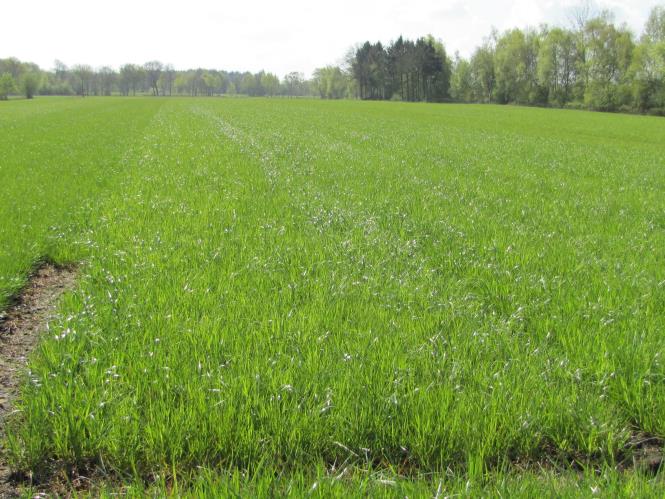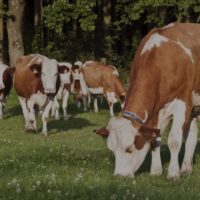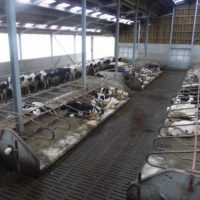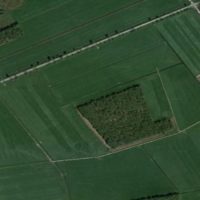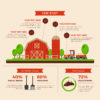Description
Background
Practitioners are aware of the difficulty of successfully establishing valuable forage grasses on moor sites. The right choice of grass variety plays a decisive role alongside care and management adapted to the site and use. Due to its wintering tendency, German ryegrass, which is otherwise very powerful, also reaches its limits in difficult sites. Fescue is considered to be particularly persistent and productive. The tall fescue should combine the high yields of the welsh ryegrass with the endurance of the meadow fescue.
The farmer tried different fescue and meadow fescue grass mixtures on a ryegrass insecure high moor site. These are to be established as an alternative to german ryegrass under practical farming conditions.
Farmer’s motivations
The farmer is very open to new things and likes to try out new grass mixtures, always with the idea of optimising his yields and qualities. Moor soils represent a challenge, especially in the long-term establishment of grasses. In the farm of Torsten Cramer moor sites are the basis for farming. So he has almost only grassland on moor and he has to use it as efficiently as possible.
Very wet, very dry but also very cold weather conditions can damage many grasses. Some grasses can cope better with such weather conditions due to a deeper root system and a higher resistance. For example the fescue.
Against this background the farmer was motivated to try out new grasses on a moor site and was interested to find alternatives to perennial ryegrass for wet moor sites because of its unsatisfying persistence.
Detailed description
The grasses were sown in August 2015 in demonstration plots to compare : in particular tall fescue vs. perennial ryegrass (cultivars for moor-soils) and structured grassland mixtures. The grasses have been tested for performance on a moor-site where perennial ryegrass is difficult to establish permanently. In Table 1 the grass mixtures and their share within the mixtures are listed.
The different grass mixtures were sown in demonstration plots. Depending on the composition of the mixture, the appropriate sowing strength was taken into account. One plot had a width of 6 metres and was 300 metres long. After successful establishment, the yield and quality of all mixtures were examined and assessed. Therefore a defined area of each plot was mown and weighed in order to measure the yield. After that the samples were then examined for quality in the laboratory. In order to determine which type of fescue is the best in terms of endurance and forage value, plots have been planted side by side. Yield and fodder quality of the single types were also compared.
There have been created trial plots to compare also single types of tall fescue varieties on their endurance, yield and quality.
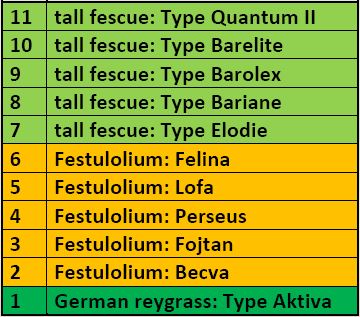
Figure 2: Single types of Tall fescue, Festulolium and German reygrass which are part in the grass mixtures in Figure 1
Results
The tall fescue could be very well established, as well as the german ryegrass and the meadow fescue. All grasses survived the first winter well and it was not very cold either. Wintering could not be observed for any variety or mixture. However, the very dry summer of 2018 showed obvious differences. After months of drought, the tall fescue could regenerate much faster than the german ryegrass.
Adoption criteria
Good weather conditions and know how of the farmer were essential to establish Festuca arundinacea successfully. Innovation can be adopted by farmers who have an interest in grasses and varieties and have the expertise to establish successful grasses. Breeding enables an ever improving range of varieties adapted to sites and farm uses.
Future prospects
Climate experts assume that in the future there will be more prolonged, very wet or very hot and dry weather conditions than ever before. Against this background, grasses must be found and established that can withstand the extreme weather better than others. The farmer who thinks about efficient use of his grassland for forage is considered innovative in this case.

